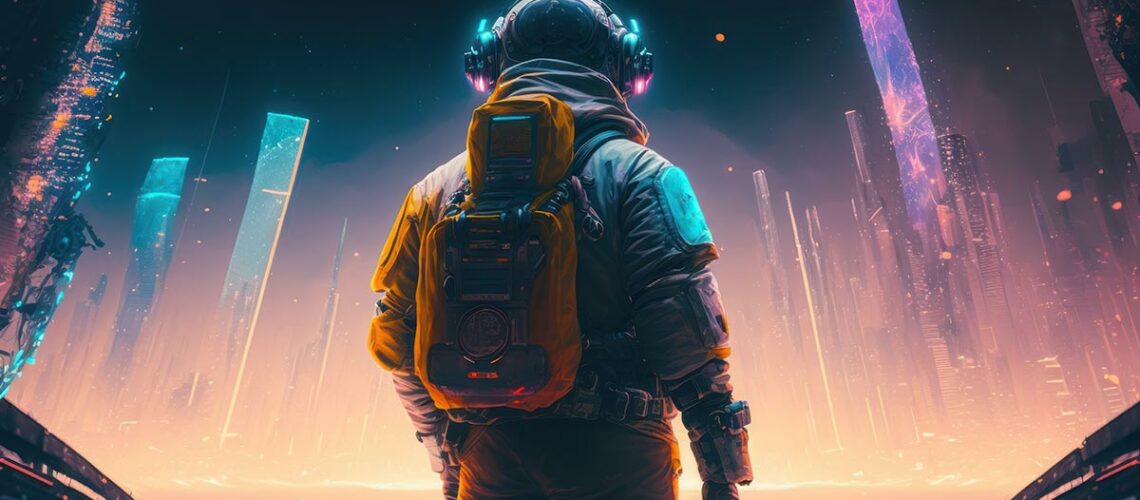One of the most significant innovations that has transformed filmmaking is Computer-Generated Imagery (CGI). With CGI, filmmakers have harnessed the power of digital wizardry to create visually stunning and awe-inspiring scenes that were once thought to be impossible. From enchanting mythical creatures to jaw-dropping action sequences, CGI has taken storytelling to new heights, captivating audiences around the world.
CGI Early Days: A Glimpse into the Past
Computer Generated Imagery (CGI) has a rich and transformative history that has significantly altered the landscape of filmmaking, entertainment, and visual arts. The roots of CGI can be traced back to the mid-20th century when computer technology was still in its infancy. In the 1960s, early pioneers like Ivan Sutherland and his student David Evans created some of the first computer-generated graphical images, paving the way for the digital visual revolution. However, it was in the late 1970s and early 1980s that CGI began to make its mark on the big screen. The film “Star Wars: Episode IV – A New Hope” (1977) is often heralded for its groundbreaking use of computer-controlled cameras and motion control, a precursor to modern CGI techniques.
Nonetheless, it was the release of “Tron” in 1982 that marked a significant turning point, as it showcased some of the earliest examples of computer-generated characters and environments. But it was the collaboration between Lucasfilm’s Industrial Light & Magic (ILM) and Pixar that truly revolutionized the industry. The 1982 film “Star Trek II: The Wrath of Khan” featured the first use of a CGI sequence by ILM, while Pixar’s “Toy Story” (1995) became the first feature-length film created entirely using CGI, forever changing the animation landscape
Revolutionizing Visual Effects
The 1990s saw an explosion in CGI’s capabilities, with films like “Terminator 2: Judgment Day” (1991) demonstrating the potential of CGI for creating realistic visual effects. The groundbreaking liquid metal effects in the film showcased the technology’s ability to mimic real-world materials and phenomena. The success of films like “Jurassic Park” (1993) further underscored the impact of CGI on creating lifelike creatures and environments, forever altering the possibilities of visual storytelling.
Unleashing Creativity: Creating Otherworldly Realms
CGI’s ability to transport audiences to fantastical worlds is unparalleled. Films like “Avatar” (2009) and “Guardians of the Galaxy” (2014) are prime examples of how CGI has enabled filmmakers to craft immersive environments that captivate the imagination. The lush landscapes of Pandora in “Avatar” and the vibrant cosmic realms in “Guardians of the Galaxy” are a testament to the limitless creative potential of CGI.
Bringing Characters to Life: Epic Battles and Thrilling Stunts
CGI in filmmaking has also breathed life into characters that were once confined to the realm of imagination. The character Gollum from “The Lord of the Rings” trilogy (2001-2003) is a striking example of its impact on character portrayal. Through motion capture techniques, Gollum emerged as a fully realized character with nuanced emotions and a distinct personality, blurring the lines between the real and the virtual.
CGI’s influence extends to the realm of action sequences, where it has enabled filmmakers to choreograph breathtaking battles and high-octane stunts. The “Transformers” series (2007-2017) is renowned for its elaborate CGI-driven action scenes, featuring colossal robots engaged in dynamic combat. These sequences not only provide visual spectacle but also demonstrate CGI’s role in pushing the boundaries of what can be achieved on screen.
Reimagining Superheroes
The resurgence of superhero films owes much to the advancements of CGI in filmmaking. Characters with extraordinary powers and abilities come to life with stunning realism, allowing audiences to connect with their favorite heroes on a deeper level. The Marvel Cinematic Universe, with films like “Avengers: Endgame” (2019), showcases how CGI can seamlessly integrate superhuman feats into the narrative, culminating in visually astonishing spectacles that leave audiences in awe.
Unveiling Exciting Possibilities
While CGI has undoubtedly revolutionized filmmaking, there are challenges associated with its use. Filmmakers must strike a delicate balance between practical effects and CGI to maintain authenticity. Over-reliance on CGI can lead to a disconnect between the audience and the film, emphasizing the need for thoughtful integration.
As technology continues to evolve, the future of CGI holds exciting possibilities. With advancements in real-time rendering and virtual production techniques, filmmakers can streamline the creative process and make on-set decisions that enhance the final product. Additionally, AI-driven CGI tools may further expedite the production process while maintaining the artistic integrity of the film.
The Influence of CGI in filmmaking
From its humble beginnings to its current role in shaping cinematic narratives, CGI has redefined what is visually achievable on the silver screen. Through the creation of captivating worlds, lifelike characters, and awe-inspiring action, CGI has allowed filmmakers to push the boundaries of storytelling. While challenges exist, the future of CGI looks promising, promising a continued marriage of technology and creativity that will captivate audiences for generations to come. As CGI evolves, so too does the art of filmmaking, making each trip to the cinema an adventure into the realms of limitless imagination.

